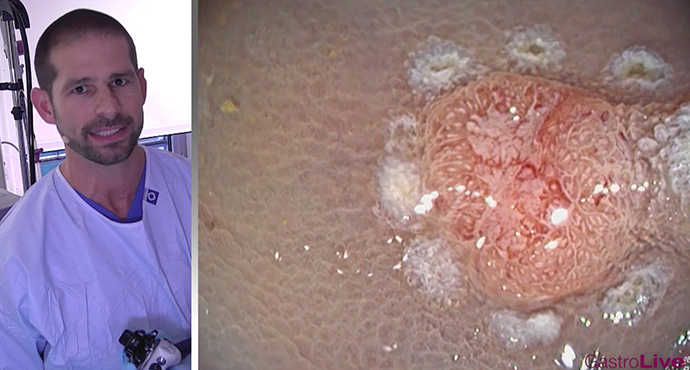Dutch Endoscopic Full-Thickness Resection Experience in Colorectum
Douglas K. Rex, MD, FASGE, reviewing Zwager, LW, et al. Endoscopy 2020 Jun 4.
This report summarizes a prospectively acquired experience using the endoscopic full-thickness resection device (FTRD) in the colorectum. Among 367 procedures performed between July 2015 and October 2018 in the Netherlands and included in the study, common indications were primary resection of suspected T1 colorectal cancer (CRC; n=71), re-resection after incomplete resection of T1 CRC (n=150), difficult polyps (n=133), and subepithelial tumors (n=13).
There were 21 (5.7%) technical failures because the sigmoid could not be passed with the device or the lesion could not be retracted into the cap. In the remaining lesions, tumor-free resection margins (R0 resection) were achieved in 82.4% of procedures, and full-thickness resection was successful in 83.2% of procedures.
There were 7 perforations, including 5 delayed perforations, and all 7 required surgery. Five of the perforations were in the sigmoid, and the authors recommend laxatives after sigmoid resections to keep intraluminal pressure low. Of 15 appendiceal lesions, 3 (20%) developed appendicitis.
R0 resection for T1 CRCs was 78%, but it was 93% for retreatment of previous incomplete resections of T1 cancer. For scar resections after previous resection of T1 CRCs, the most common finding was scar tissue only (82%); residual cancer was 7.7%.
At follow-up, the clip was still in situ in 16.6% of patients at a median of 4 months.
The total rate of surgery after using an FTRD was 17.7%, including failures, perforations, and unfavorable histologic features in resected cancers.

COMMENTThis is now the largest series of colorectal FTRD use published, and it indicates that the device can be used to reduce the need for surgical treatment of difficult polyps and early cancers. The rationale for its use in appendiceal lesions remains suspect, given the substantial risk of appendicitis and the safety of laparoscopic resections of the distal cecum.
Note to readers: At the time we reviewed this paper, its publisher noted that it was not in final form and that subsequent changes might be made.
CITATION(S)
Zwager LW, Bastiaansen BAJ, Bronzwaer MES, et al. Endoscopic full-thickness resection (eFTR) of colorectal lesions: results from the Dutch colorectal eFTR registry. Endoscopy 2020 Jun 4. (Epub ahead of print) (https://doi.org/10.1055/a-1176-1107)

